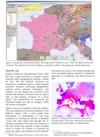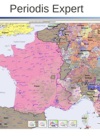Where Are My Ancestors?
V - Where Are My Ancestors?
Euratlas Periodis is neither an ethnic atlas nor a catalogue of historical controversies. We have tried to keep close to the sources and to trace merely the exact path of borders at an exact moment of history, that is at the end of every century, during the past two millenia.
1) For instance, Belgium, ancient Greece, Italy, modern France, Holland and Spain had an influence on the history of Europe, never Romania. Then, why do you show Romania?
Allow us to mention that your question is completely irrelevant. The notion of 'influence on history' is purely moral or philosophical while Euratlas Periodis is a historical atlas. You will find in it, the accurate location of the sovereign and semi-independent entities which existed in the European cultural area at the end of each century and you will see their birth, their evolution or their disappearance. We strongly reject the use of the Periodis maps for any kind of immature contest about the relative value of the represented countries.
2) Why don't you show that, without Romania, Europe doesn't have history?
There is no objective criterion to determine that a past or present country has a higher value than another one. Such a measure could be, for instance, the life expectancy or the well-being of the inhabitants but we dispose of such data only from the 19th century and the website 'gapminder.org' highlights this information in a convenient form. Otherwise it is extremely questionable to claim one country was or is better than another one.
3) The latest true genetic discovery shows that the original Romanians came from Gipsy land that is Rajasthan in India, why don't you show that on your maps?
In history we do have some 'genetic discoveries' since the very end of the 20th century but the answers are often inconsistent or contradictory and the biologists rely on standard historians, that is on written sources, to interpret the results. In consequence, the historians cannot use these discoveries since their meaning is based partly on their own works. It is a vicious cycle.
4) Why don't you show that the Szekelys who are Hungarians and speak Hungarian, have been living in Transylvania since Attila the Hun?
The Székelys, Szeklers or Siculi are a population of Hungarian language living in the Carpathians mountains of eastern Transylvania, presumably, since the 9th, 10th or 11th century. There are several interesting theories about their origin: Magyar, Turkic, Avar, Bulgarian or Hunnic and it is certainly worthy to examine with care every hypothesis. However the English, French and German versions of the Periodis atlas do not aim to show or explain the ethnic origin of the mentioned entities. Thus you will only see names and locations of peoples or states and you will have to ask a historian for the various theories about ethnogenesis.
5) There are attestations, including Gesta Romanorum, Simon of Kéza, Chronicon Pictum, Anna Komnene, Antonio Bonfini, Filippo Buonaccorsi-Callimachus and several archeological confirmations that Transylvania is originally a Romanian land. Why don't you show that?
Undoubtly, in the historical sources, there are a lot of reports of Latin language populations living in the Balkan area since the 9th century. However the Periodis maps do not show the languages spoken by the mentioned entities, but only their names at the concerned time. You will have to ask a historian to learn more about the spoken languages hypothesis. Moreover, we must emphasize that nobody should claim a modern citizenship on the basis of 1000 years old, or more, events. Actually, it is very difficult, if not impossible, to find in the world one single population eligible for a pure and direct ancestry over 1000 years.
6) Why have you drawn Wallachia in the place of Transylvania?
We have not drawn Wallachia in the place of Transylvania. You must read carefully the 'Map Legend' page (www.euratlas.net/history/europe/legend.html) and the introductory text on the right of the main Periodis Web page (www.euratlas.net/history/europe/index.html).
7)The Bulgars and Magyars built organized nations while Vlachs or Dacians never did so and are only recalled to distort history and justify Trianon. Why do you support, in your maps, the dismemberment of Hungary?
The Treaty of Trianon is a peace agreement signed in 1920 that greatly redefined and reduced Hungary's borders. Some people in Hungary feel that Trianon was and still is a mere forfeiture but, whatever are the arguments, we neither draw nonexistent borders nor omit existing ones.
8) a) Why don't you ask the assistance of an expert of historical geography of Hungary before the next updating of your database? - b) Have you asked some experts on Romanian history before drawing your maps?
Here we have twice the same question expressed by two different persons. Moreover the question contains the answer in itself. Actually the query wants to emphasize the point of view of a specific category of persons. In short, since the 18th century, there are several conflicting theories about the origins of the Romanians and each theory is based on modern political opinions. We think that, since the Periodis maps are showing the accurate borders of each entity existing at a specific moment of history, everyone could use this atlas as a starting point for more extensive research.
See also the article
From Historical Mapping To Historical Geographical
Information System

PDF format
or the presentation

PDF format
Periodical Historical Atlas of Europe
according to your needs